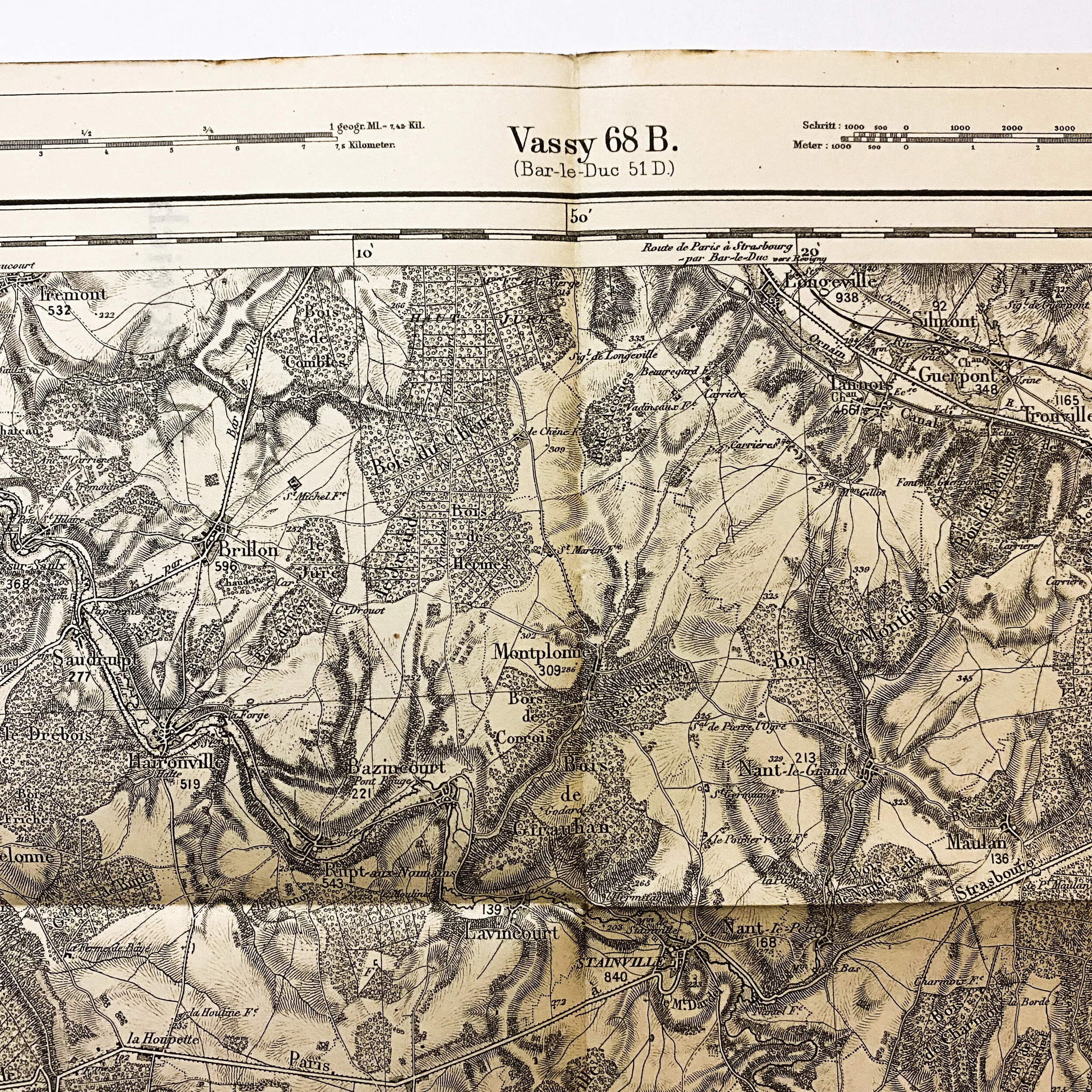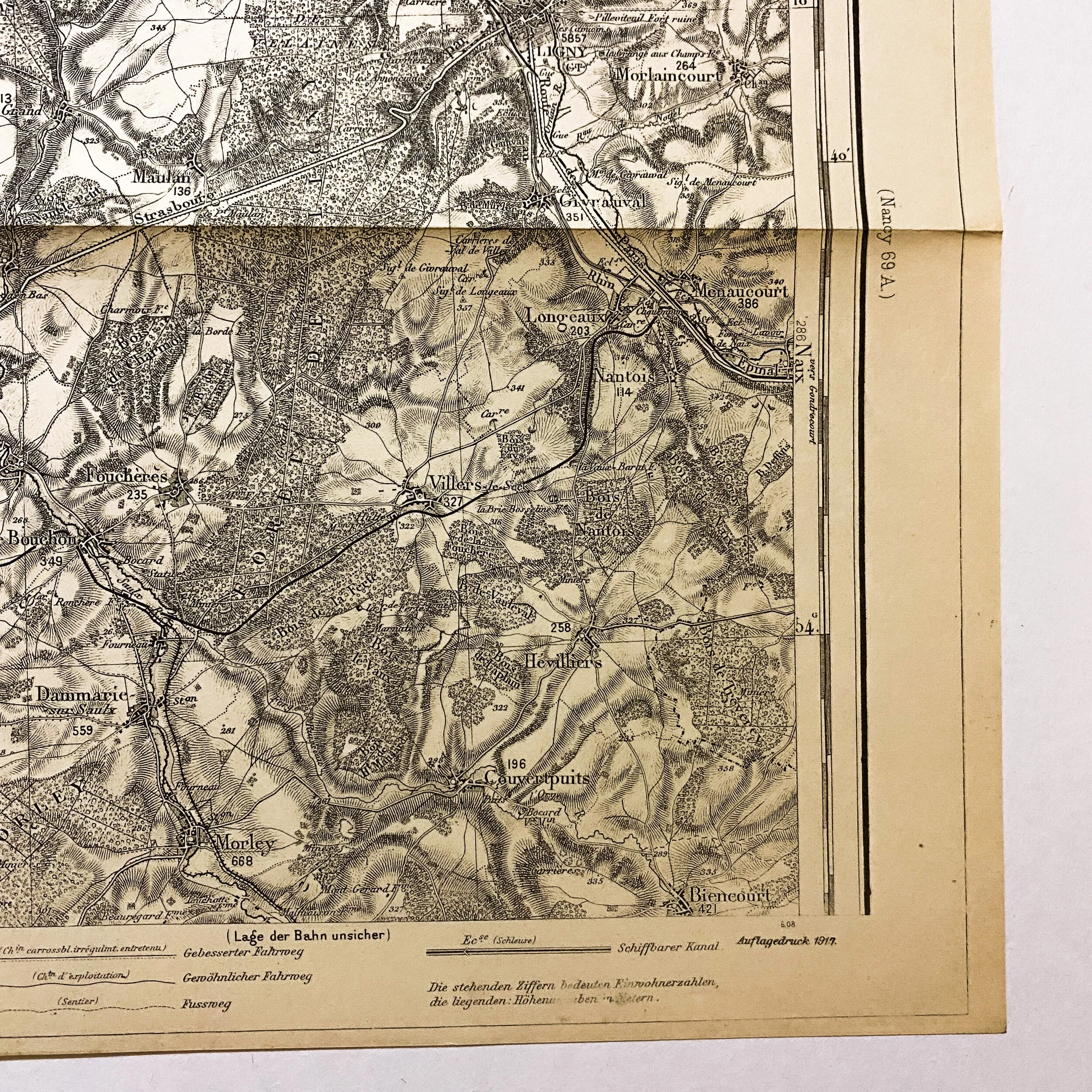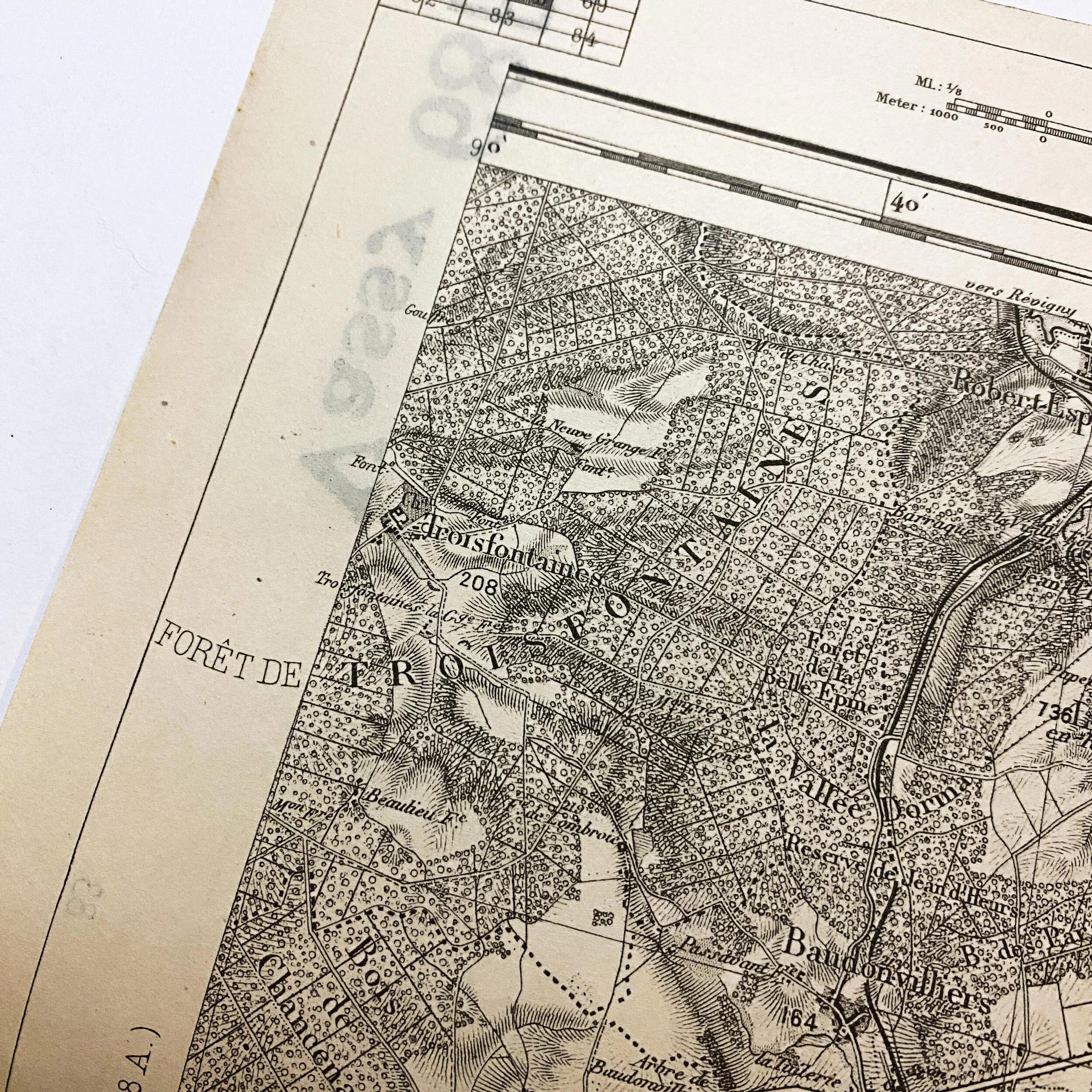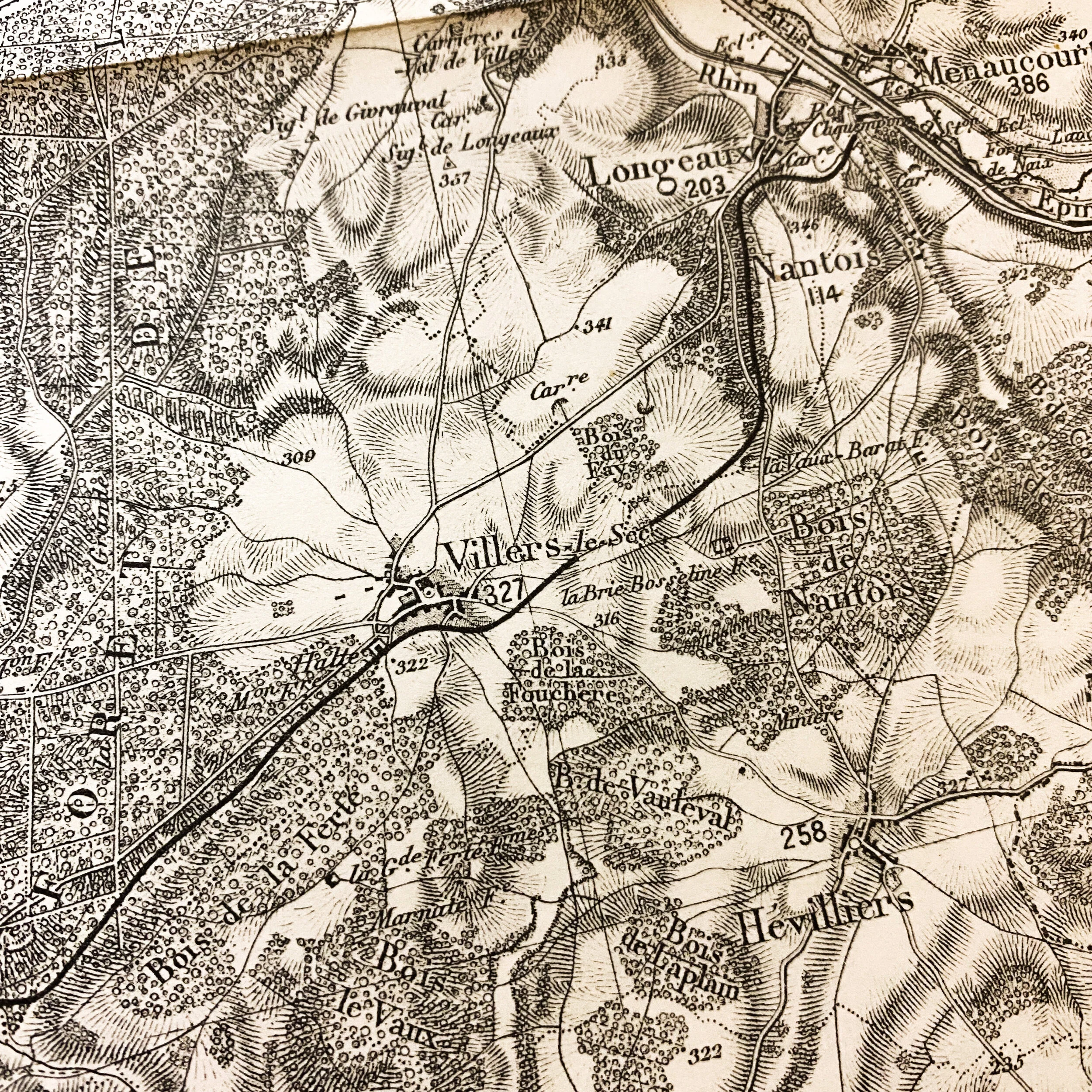Captured German Combat Map of 'Vassy 68B' France Sector














Captured German Combat Map of 'Vassy 68B' France Sector
Size: 18.5 x 12.5 inches
This original WWI German combat map of the ‘Vassy’ France sector. This map is one of 45 taken off of a German major on the battlefield of ‘Rupt en Weurve’ in the St. Mihiel Sector on September 13th, 1917 by Lieut. Harry G. Sheldon of the A.E.F. forces. These maps are broken into sets of 4 being label A,B,C and D of each given sector and district. Putting these section together forms a large map. They are all common scale and can be placed side by side to fit. This map is labeled ‘Vassy 68A’ and is 1 of 4 maps for this given sector.
This map would have utilized and used in the Vassy sector also located near the sectors of Nancy, Bar-le-Duc, and Commercy. This map features notable locations such as Velaines, Villers, and the Marne River.
Battles on the Hindenburg Line:
Foch planned a series of concentric attacks on the German lines in France (sometimes referred to as the Grand Offensive), with the various axes of advance designed to cut German lateral communications, intending that the success of an attack would enable the entire front line to be advanced. The main German defenses were anchored on the Hindenburg Line, a series of defensive fortifications stretching from Cerny on the Aisne river to Arras. Before Foch's main offensive was launched, the remaining German salients west and east of the line were crushed at Havrincourt and St Mihiel on 12 September and at the Battle of Épehy and the Battle of the Canal du Nord on 27 September.
The first attack of the Grand Offensive was launched on 26 September by the French and the AEF in the Meuse-Argonne Offensive (this offensive includes the Battle of Somme-Py, the Battle of Saint-Thierry, the Battle of Montfaucon, and the Battle of Chesne of 1 November). On 28 September, the Army Group under Albert I of Belgium (the Belgian Army, the British Second Army and the French Sixth Army), attacked near Ypres in Flanders (the Fifth Battle of Ypres). Both attacks made good progress initially but were then slowed by supply difficulties. The Grand Offensive involved attacking over difficult terrain, resulting in the Hindenburg Line not being broken until 17 October.
On 29 September, the central attack on the Hindenburg Line commenced, with the British Fourth Army (with British, Australian and American forces) attacking in the Battle of St Quentin Canal and the French First Army attacking fortifications outside St Quentin. By 5 October, the Allies had broken through the entire depth of the Hindenburg defenses over a 19 mi (31 km) front. General Rawlinson wrote, "Had the Boche [Germans] not shown marked signs of deterioration during the past month, I should never have contemplated attacking the Hindenburg line. Had it been defended by the Germans of two years ago, it would certainly have been impregnable…."
On 8 October, the First and Third British Armies broke through the Hindenburg Line at the Second Battle of Cambrai. This collapse forced the German High Command to accept that the war had to be ended. The evidence of failing German morale also convinced many Allied commanders and political leaders that the war could be ended in 1918; previously, all efforts had been concentrated on building up forces to mount a decisive attack in 1919.
Through October, the German armies retreated through the territory gained in 1914. The Allies pressed the Germans back toward the lateral railway line from Metz to Bruges, which had supplied the front in Northern France and Belgium for much of the war. As the Allied armies reached this line, the Germans were forced to abandon increasingly large amounts of heavy equipment and supplies, further reducing their morale and capacity to resist.
There were many casualties in the Allied and German armies. Rearguard actions were fought during the Pursuit to the Selle (9 October), Battle of Courtrai (14 October), Battle of Mont-d'Origny (15 October), Battle of the Selle (17 October), Battle of Lys and Escaut (20 October) (including the subsidiary Battle of the Lys and Battle of the Escaut), Battle of the Serre (20 October), Battle of Valenciennes (1 November), the Battle of the Sambre (including the Second Battle of Guise (4 November), the Battle of Thiérache (4 November), and the Passage of the Grande Honnelle (5 November), with fighting continuing until the last minutes before the Armistice took effect at 11:00 on 11 November 1918. The last soldier to die was Henry Gunther, one minute before the armistice came into effect.